Etruscans in the graves
View of the Etruscan necropolis from the air. It is clearly seen that they had two types of tombs - domed (tulumos), with a false vault, assembled from slabs, shifted relative to each other so that a vault was formed from the reverse steps, and carved into the rocky soil with the deepening. So that the dome of the domed tomb did not fall down under its own weight, it was covered with earth from above.
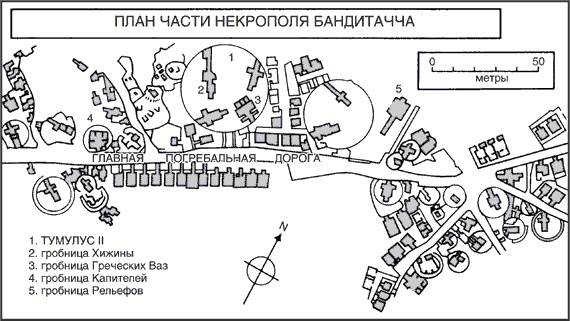
Often these tombs were built alternately and formed the real "city of the dead."
One of the "streets" in such a necropolis. Such tombs were younger than the domes.
It would be interesting to just walk among them, right?
And I, for example, just really want to get into such a burial ...
It's amazing how some people come to such a thing? For example, this is - “swords fell into the graves because they were not needed by people, they would not put the necessary things in the grave”. And this is after both ethnographers from different countries and historians proved ... a stunning set of examples - people’s belief in the afterlife resurrection was so strong in the past that they gave all the best and necessary things to “the next world” because ... it will be more necessary for the deceased. " There was a long time ago on IN my material “Etruscans against the Russians”, and this is another “sore subject” on HE. Well, I want some to have ... great ancestors, which the Romans themselves gave rise to.
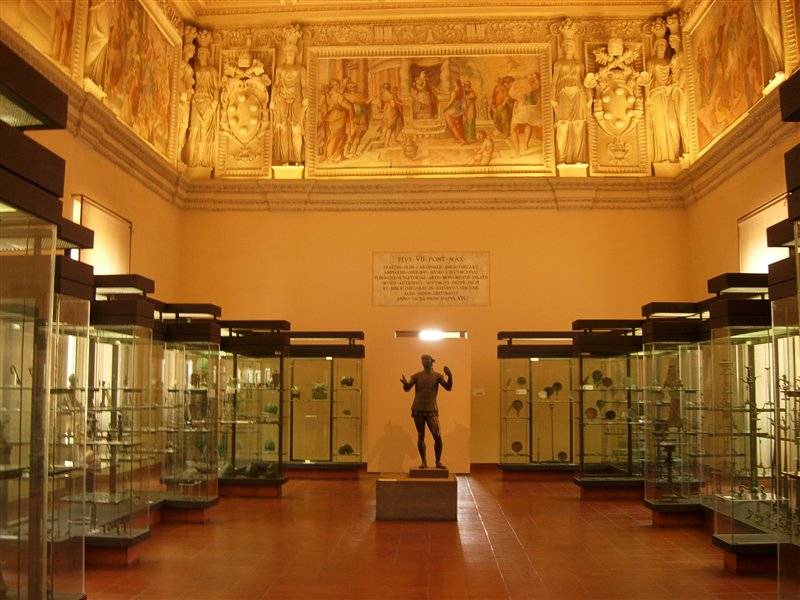
Today, the Etruscan antiquities (it is clear that the Etruscans themselves never called themselves that!) Adorn the most famous museums of the planet - the Louvre and the Gregorian Etruscan Museum in the Vatican. Many different Etruscan antiquities are kept in small museums in the cities of Tuscany.
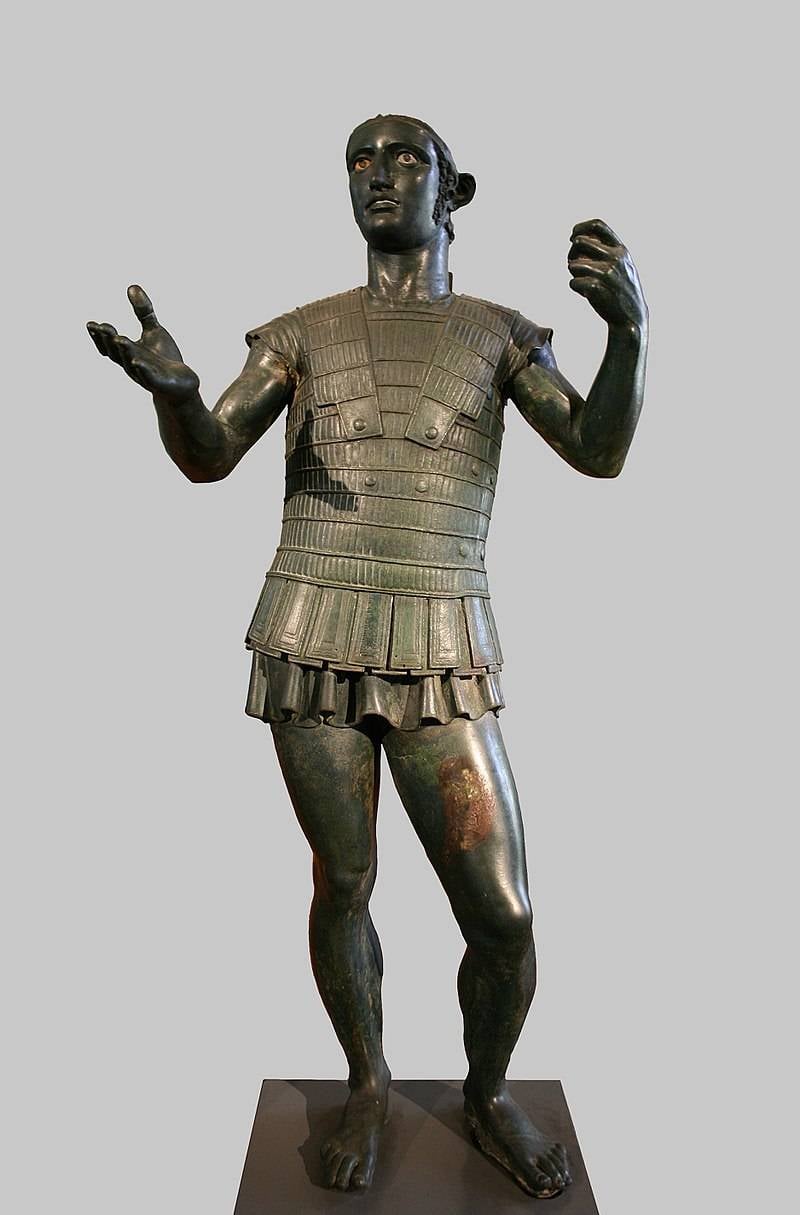
The figure of "Mars of Todi", V century BC. e. Depicts an Etruscan warrior in characteristic armor. (Gregorian Etruscan Museum in the Vatican)
Well, there is nothing common in the culture of the Etruscans and the Slavs, especially nothing in common in the funeral rites. The funeral rites, by the way, have become for many nations the most important source of information by which we can judge them. So with the Etruscans the same. However, the absurdity of some judgments is completely redeemed by the ignorance of their authors (well, a solid four in school in kind, which is more!). Therefore, today we will try to tell as much as possible about the funeral culture of the Etruscans, because, in fact, no other has come to us.
The Etruscans were famous for their skill in bronze casting. For example, it cost them nothing to cast such a bronze cauldron. (Gregorian Etruscan Museum in the Vatican)
There are different points of view from where they came from, but the main thing today is that they are newcomers from Asia Minor, and first they settled in Sardinia, and only then they crossed over to the Appeninsky peninsula. Like it or not, what were their haplogroups, we are not going to find out now. We will try to examine precisely their burial culture, that is, to see how they buried their departed and what they put on the road. Fortunately, the Romans, although they assimilated the Etruscans and rebuilt their cities, did not touch their burials. As a result, not tens, not hundreds, but MANY THOUSANDS (!!!) of burials fell into the hands of historians, in which various items of their burial cult, art and culture as a whole were found.
But the cauldron is a cauldron, but this Chimera from Arezzo is made with much more art. And nothing like this has ever, anywhere and never been found in the burials of the Slavs! Bronze sculpture V c. BC er (Archaeological Museum, Florence)
Here, for example, Etruscan necropolis in Cerveteri - the burials of the Etruscans near the Italian city of Cervetere. Thousands of graves were found here in the form of mounds or stone tombs built around 500 - 600. BC e.) At least the fact that the area of these necropolis is more than 400 hectares speaks about the number of burials. Today, only a small part of it is open to visitors, and naturally, and that which is open is empty. Because the finds from these tombs are in the collection of Augusto Castellani in the Villa Julia National Museum in Rome, and also adorn the Vatican Museums and the Louvre.
Etruscan "Spouse sarcophagus" from Banditachcha necropolis in Cerveteri. Polychrome ceramics, VI century BC. er (Museum of Villa Julia, Rome). Height - 114 cm, length - 190 cm. In antiquity was painted. Dated to the second half of the 6th century BC. er
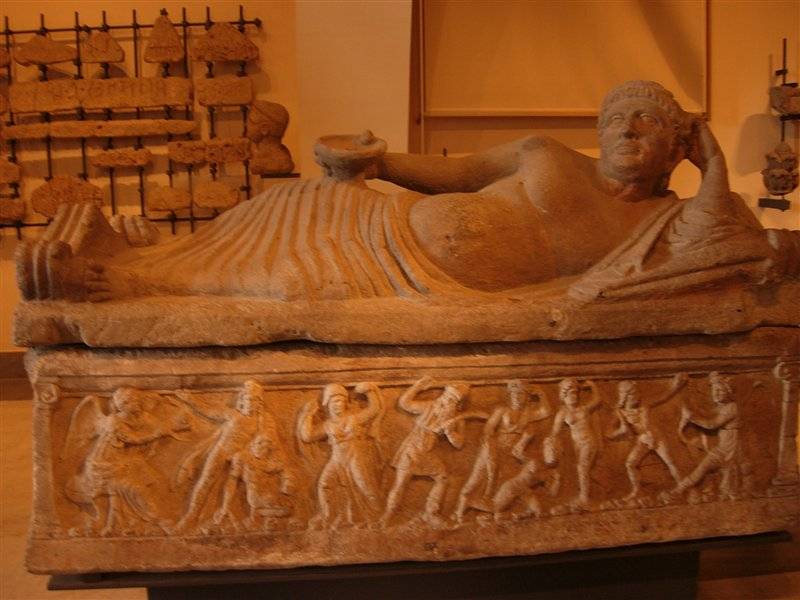
Another sarcophagus with a sculpture of the deceased on the lid. (Gregorian Etruscan Museum in the Vatican)
The postures of the dead could vary ...
And pretty much ... (Gregorian Etruscan Museum in the Vatican)
Sarcophagus 200-150 BC. (Gregorian Etruscan Museum in the Vatican)
What is included in the archaeological zone of Cerveteri, that is, what can be visited there today? These are the following objects: the “ancient city”, the Banditachcha necropolis (so named, since in the recent past, gangs lived here in empty tombs, which the great Dumas wrote about), the necropolis of Monte Abathone and the necropolis of Sorbo.
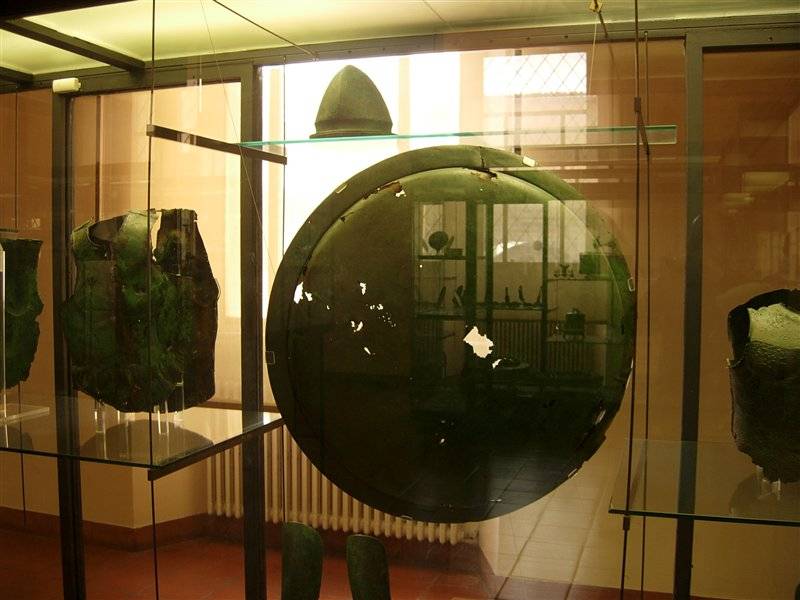
Military finds in the tombs at Cerveteri. That is, it was not a pity for all this for the departed. (Gregorian Etruscan Museum in the Vatican)
Excavations of the Banditaccia Necropolis have been going on since 1911, as a result of which tombs were excavated, which even got their own names. These are: “Cassette's Tomb”, “Olive's Tomb”, “Pilaster's Tomb”, “Sarcophagus Tomb”, “Triclinia's Tomb”, “Mound with Ships Tomb”, “Mound with Tomb of Colored Animals”, “Tomb of Capitels”. Why so whimsical names? So after all, the writing of the Etruscans has not yet been deciphered, since, although there are many inscriptions in their language, they are all short and devoted to the topic of burial. Therefore, they were called by the most characteristic and conspicuous details of the interior.
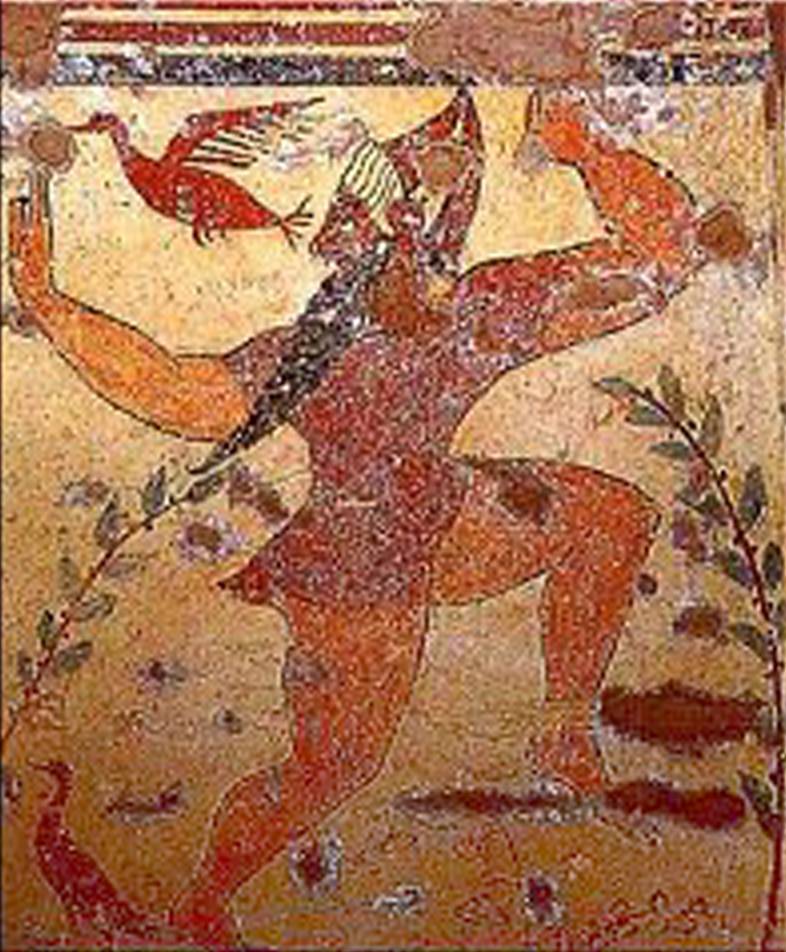
The mural of the central pier "Tombs of the Bulls".
For example, “The Mound with the Tomb of Shields and Armchairs” (the first half of the 6th century BC) was so named because it contained a lot of stone shields of warriors, and again stone chairs and lodges for the departed.
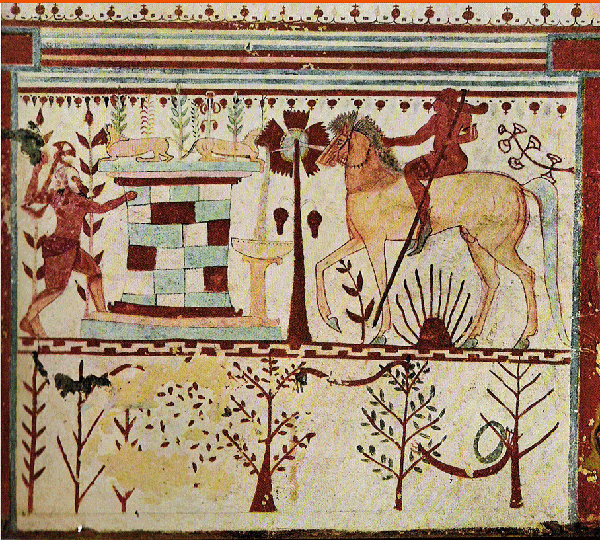
Another painting of the central pier "Tombs of the Bulls." Achilles is waiting in wait for Paris.
The “Tomb of the Painted Lions” (around 620 BC) is also clear why it was so called, just like the “Tomb of Reliefs” (around 300 BC) and the “Tomb of the Sea Waves” (IV — III centuries BC) - they were simply drawn in it.
Fragment of fresco from the "Tomb of the Triclinium." Around 470 BC. er
And just like in ancient Egypt, the overwhelming majority of tombs were plundered for a very long time, but here in the necropolis of Sorbo (south of Cerveteri), in 1836, they managed to find a completely untouched burial, which was called the “Tomb of Regolini-Galassi” (dates back to mid-VII BC), in honor of the priest Regolini and General Galassi who found him. It looks like a narrow corridor cut in stone, on both sides of which passages to the burial chambers. Here they found the most valuable from an artistic point of view, gold jewelry, as well as vessels made of bronze and silver.
Gold jewelry from the burial in Vulci. (Gregorian Etruscan Museum in the Vatican)
In the Etruscan necropolis in Veiah, two tombs with very interesting wall paintings were also found. The first one, which was called the tomb of Campana, was found back in 1842 year. Its contents were sketched, so that today we know exactly what was in it and how. The tomb was located in the hillside, and its entrance was guarded by two sculptures of stone sphinxes. In one of the chambers on the stove against the wall they found the skeleton of a warrior, surrounded by things belonging to him. And in his helmet gaped hole clearly from the blow, which, quite possibly, and led this warrior to death.
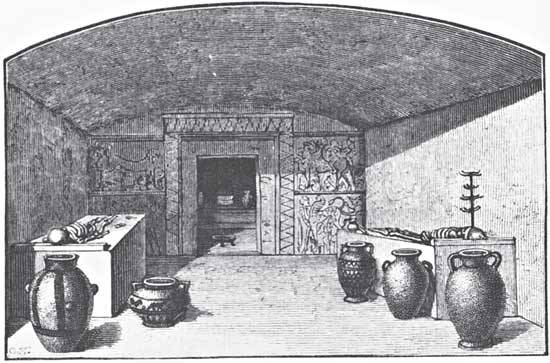
A sketch of the tomb of Campana (Veii), made by the archaeologist Canina after its discovery.
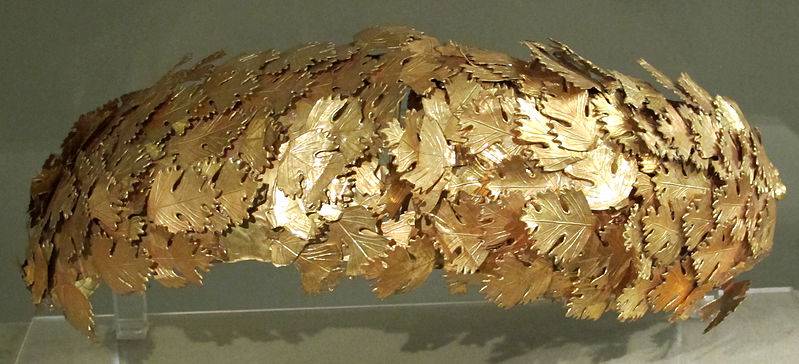
Golden "Wreath of Vulci" close-up. Great masters and aesthetes were Etruscans, of course. (Gregorian Etruscan Museum in the Vatican)
Another wreath from the tomb in Vulci. Dated 350 BC.
Very interesting and "Tomb of Reliefs" in Cherveteri, which belongs to the III century BC. er She is carved into the rock, and in the walls of her cell there are also carved niches like the boxes on which the bodies of the dead were located. Many objects are made as if they are hanging from nails in the walls, but they only symbolize real things. That is, we see the principle - “God, take that we are not worth it!”? Obviously, there was such a thing, and not in the same tomb. Nevertheless, in other Etruscan burials we find many valuable items, armor and weapons, that is, they had different tastes, that's all!
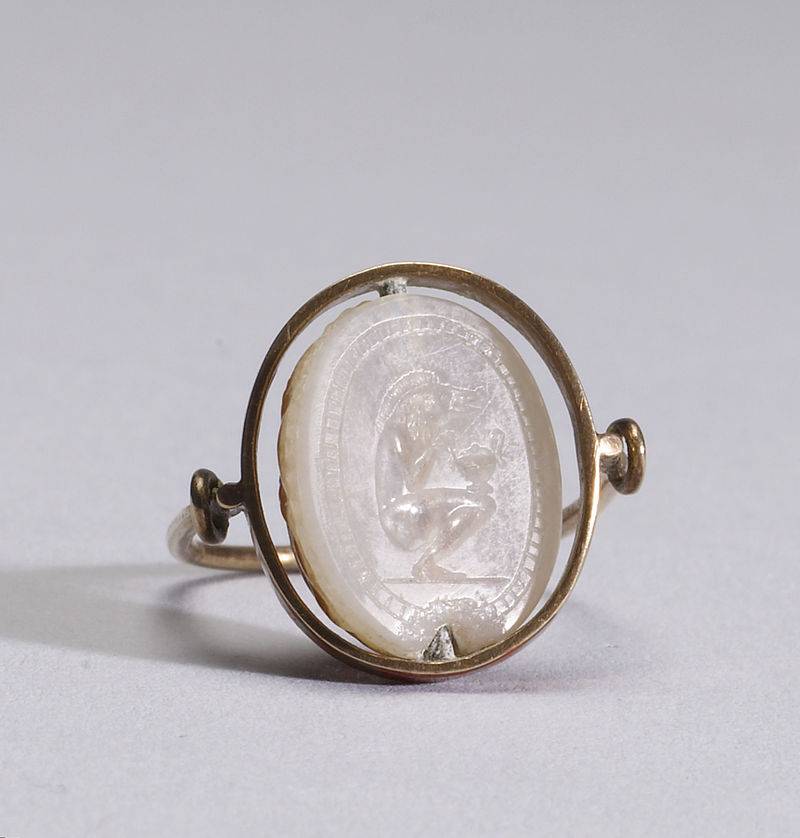
Etruscan Signet Ring. (Walters Art Museum, Baltimore, USA)
For example, on the pilaster at the top there is an image of a jug and a black bowl. On the pilaster on the right - bright multi-colored wreaths that adorn the heads of the guests. On the frieze above the wall niche we see the military equipment of the men of this family: swords, shields, helmets, greaves, and above the doorway a pair of large pipes. On the central columns there is a real exhibition of household items, some of which are of unknown purpose, since their artifacts have not been preserved. On the left column on the left you can see a large knife, and also an ax, a jug, a coil of rope, and maybe a sling. On the right, on the same column, we see a leather bag with a belt, a drinking bowl and many other items. Here and kitchen scoop, and tongs, and a large tray, hanging on a hook.
"Tomb of Reliefs" in Cherveteri. Here it is - a game board on the right of the wall, and a bag hanging on it!
And it is quite possible that in fact it is ... a board for a board game, since parallel lines are discernible on its surface, and next to it is a small bag in which bones or chips could be stored. On the panel on the right, again, is clearly visible a sling, and next to it is either a basket, or a round head of cheese. There are also skewers, a stand with two knives, a bowl on a tripod, and birds and animals that fill the free space. That is, we have a real household encyclopedia of the life of the Etruscans.
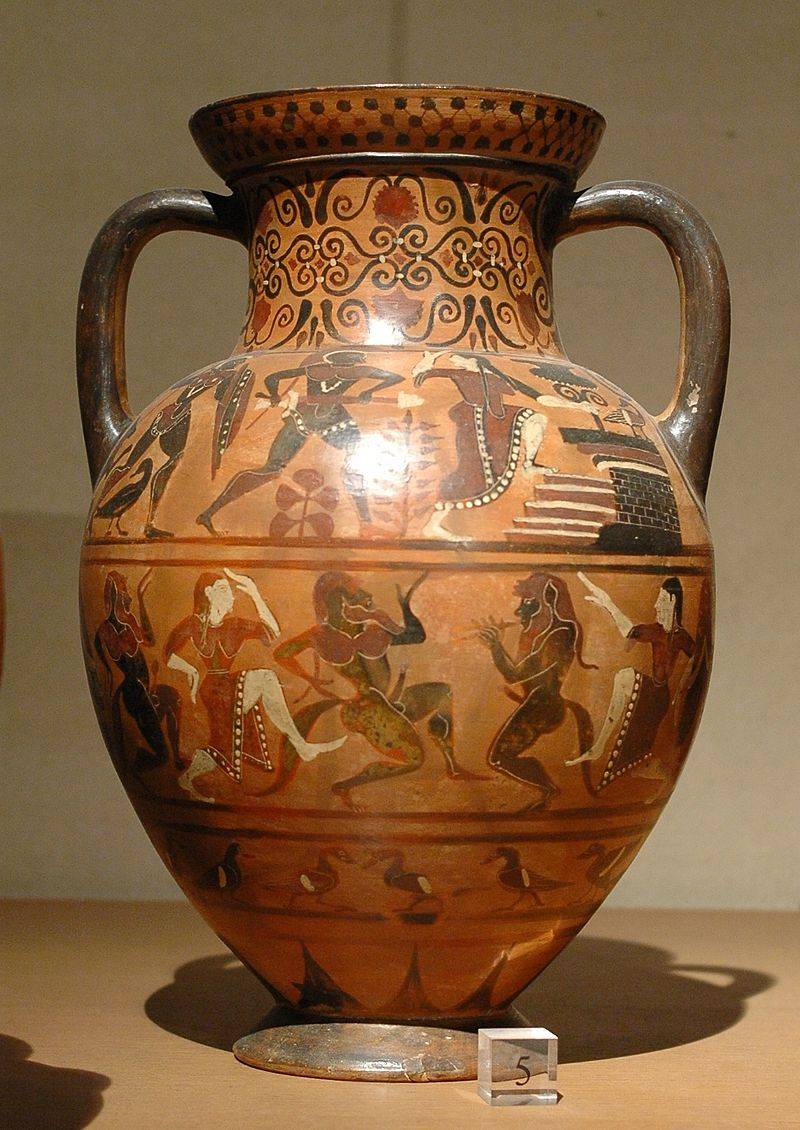
Black-figure amphora. 540-530 BC. (Louvre)
But as already noted, authentic objects, including a lot of gold and silver jewelry, as well as fine ceramics, are also found in the tombs of the Etruscans. That is, they did not spare the values for the dead. It was not a pity for them to erect whole funerary cities. Interestingly, the Etruscans knew the way of cremation and sometimes cremated their departed and then put their ashes in the burial urns, sometimes just put them on the "deathbed", and sometimes placed in ceramic urns or sarcophagi. And it is precisely these sarcophagi that are considered the most original examples of Etruscan sculpture. The lid on them is usually made in the form of a bed for symposia (feast), and it depicts a reclining figure of the deceased, often with his wife. Persons clearly have a portrait likeness. Moreover, this similarity with time becomes more and more naturalistic and even frankly immodest. Physical defects, features of the disease or old age - all this is emphasized and depicted without any embellishment. So Roman sculptors had someone to learn ...
In any case, we can see how far the burial culture of the Etruscans is from the burial culture of the Slavs, so it is worth forgetting about their “mutual origin” once and for all!
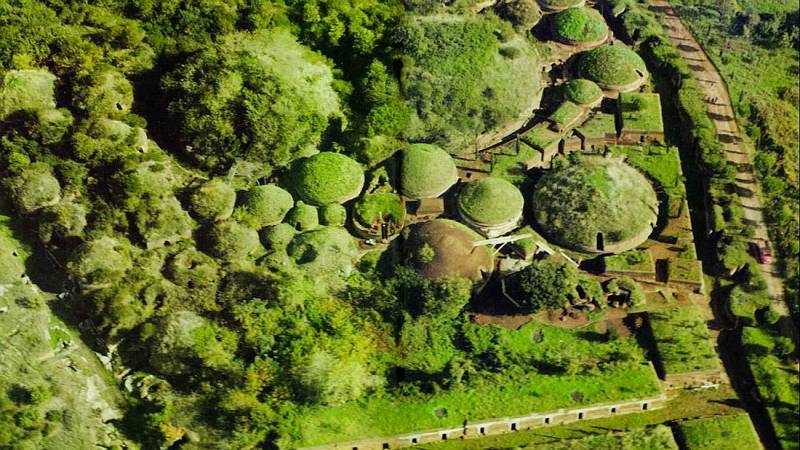
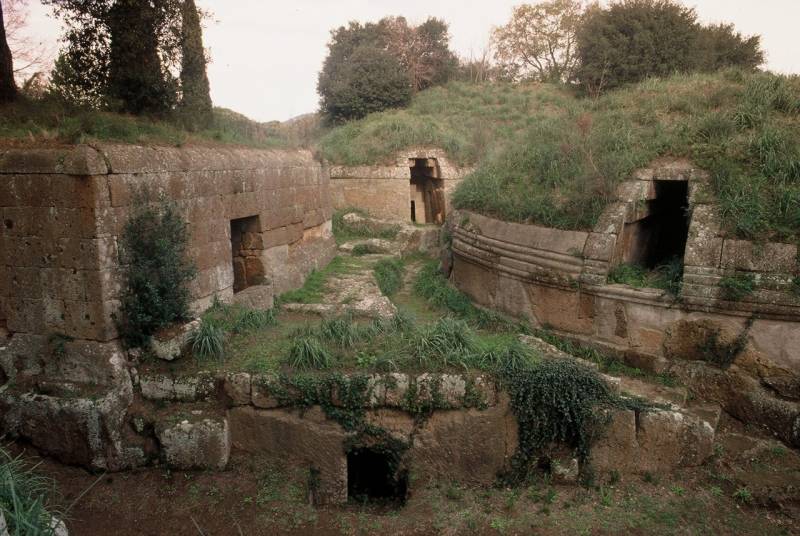
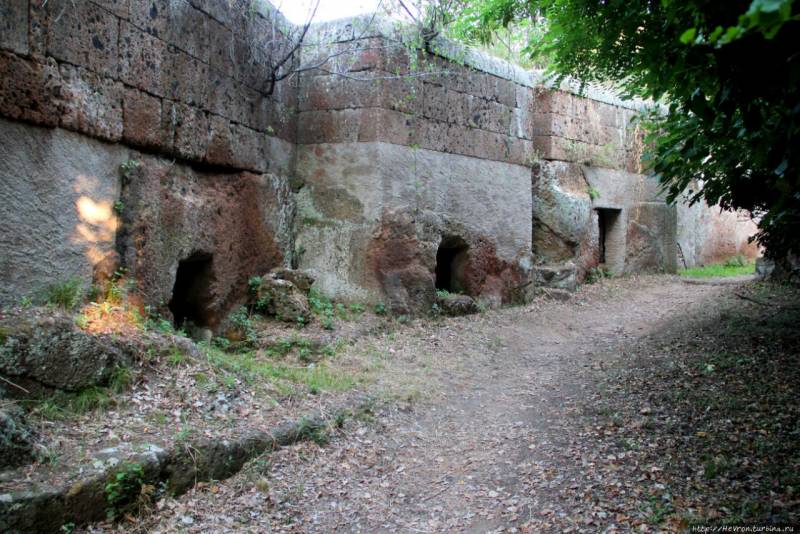
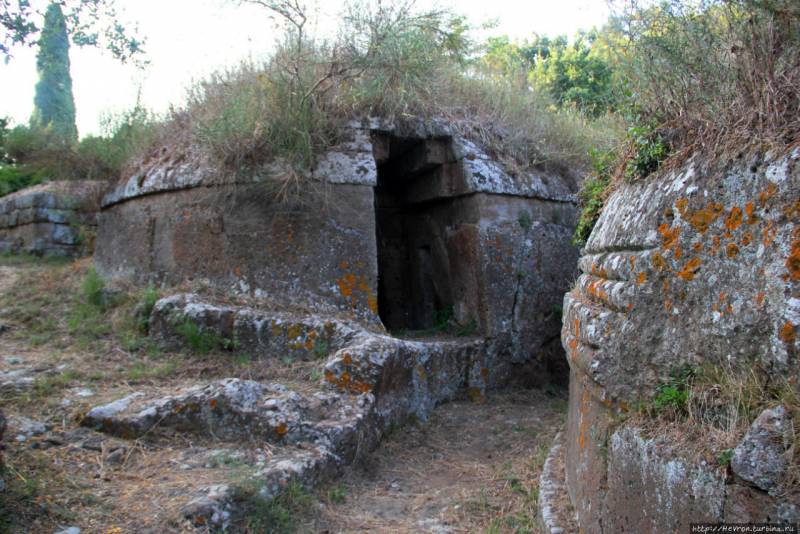
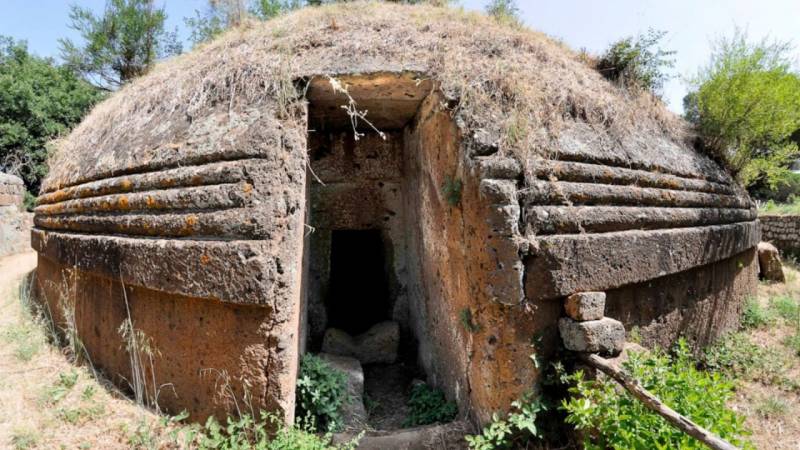
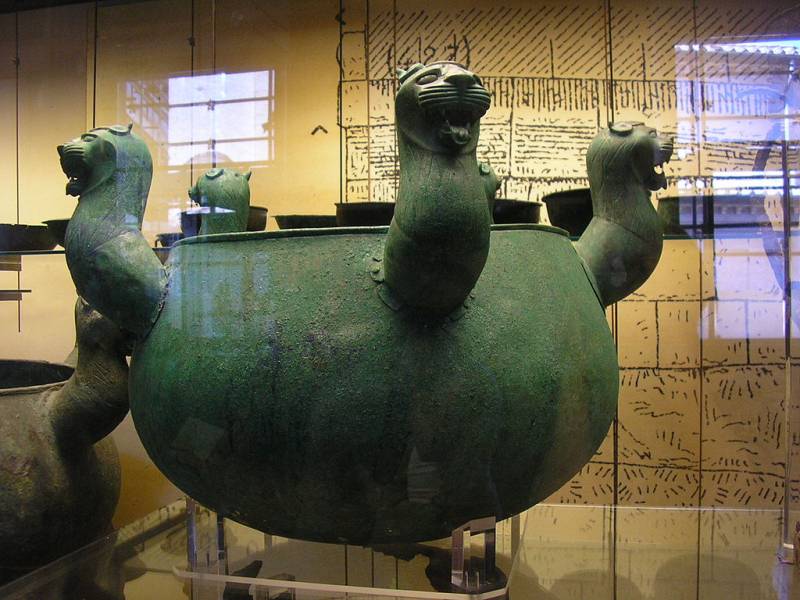
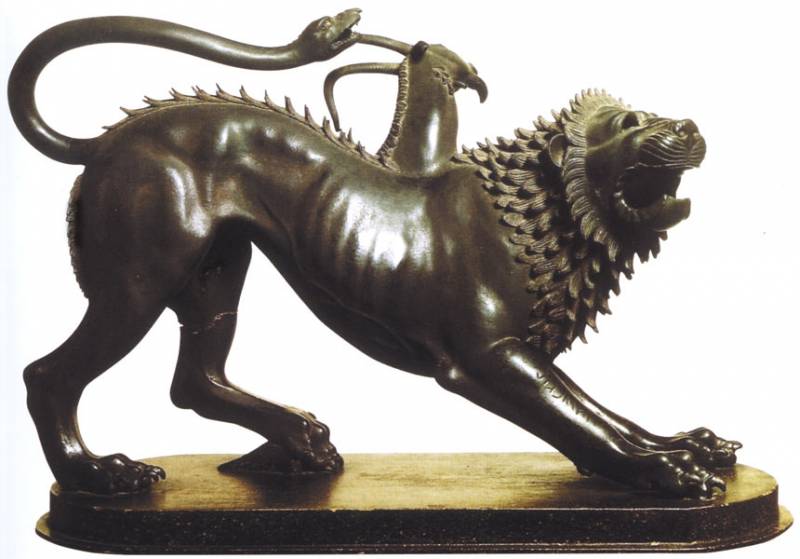
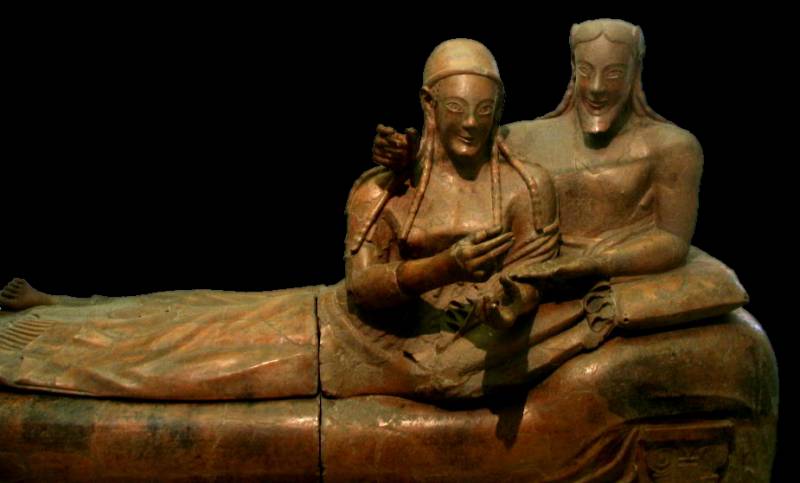

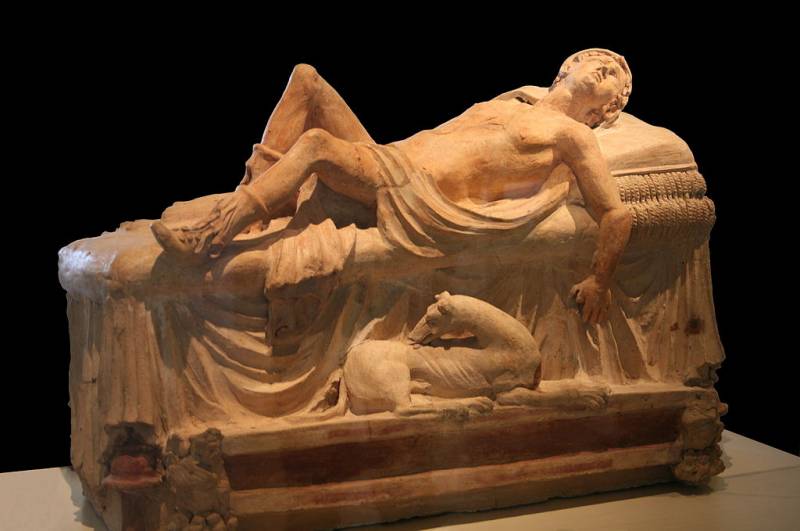
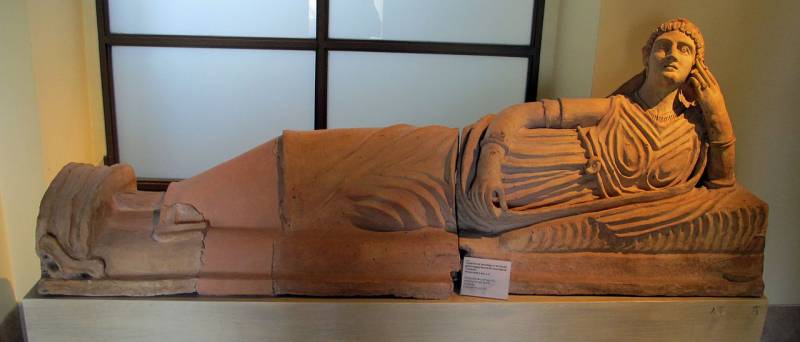
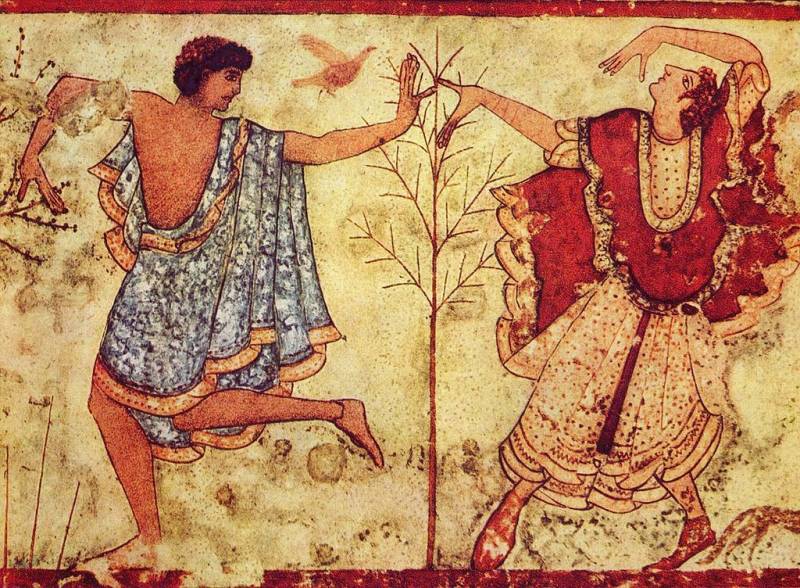
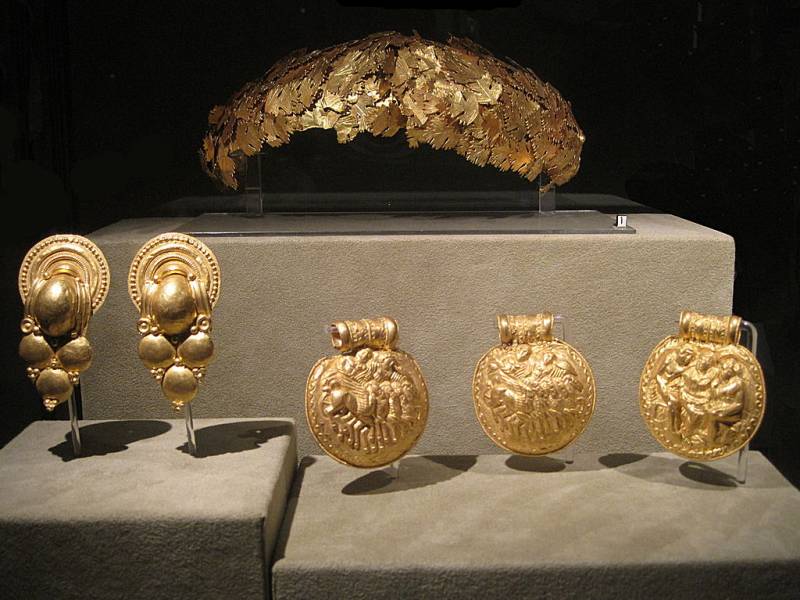
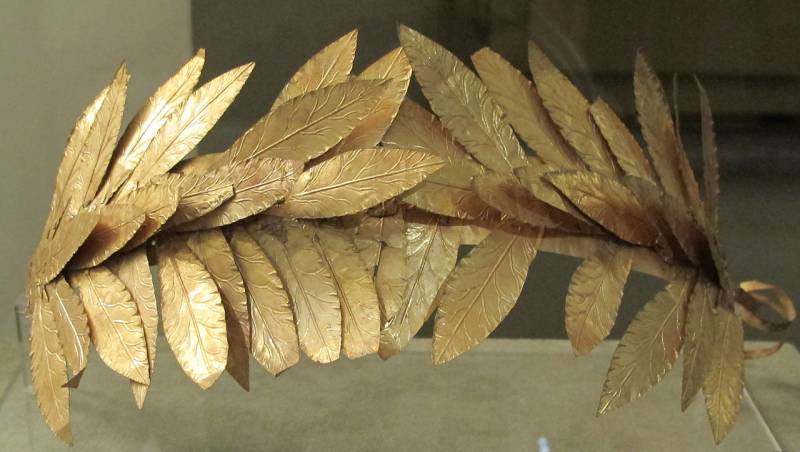
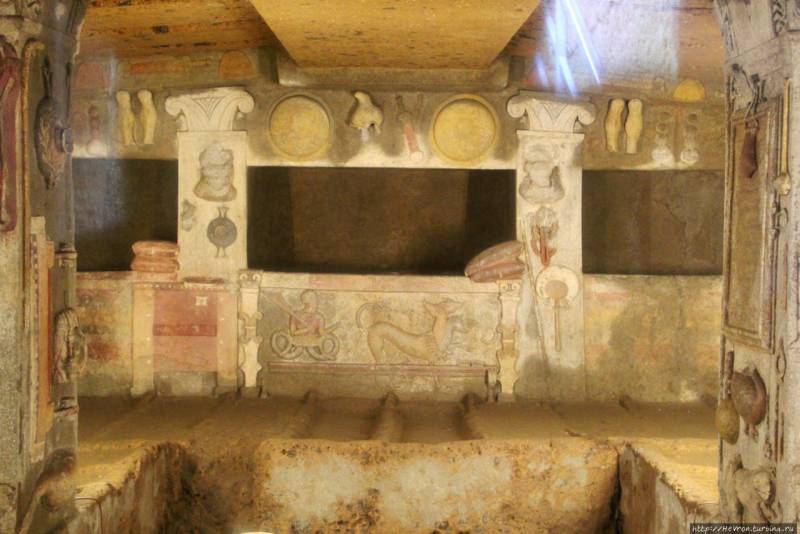
Information